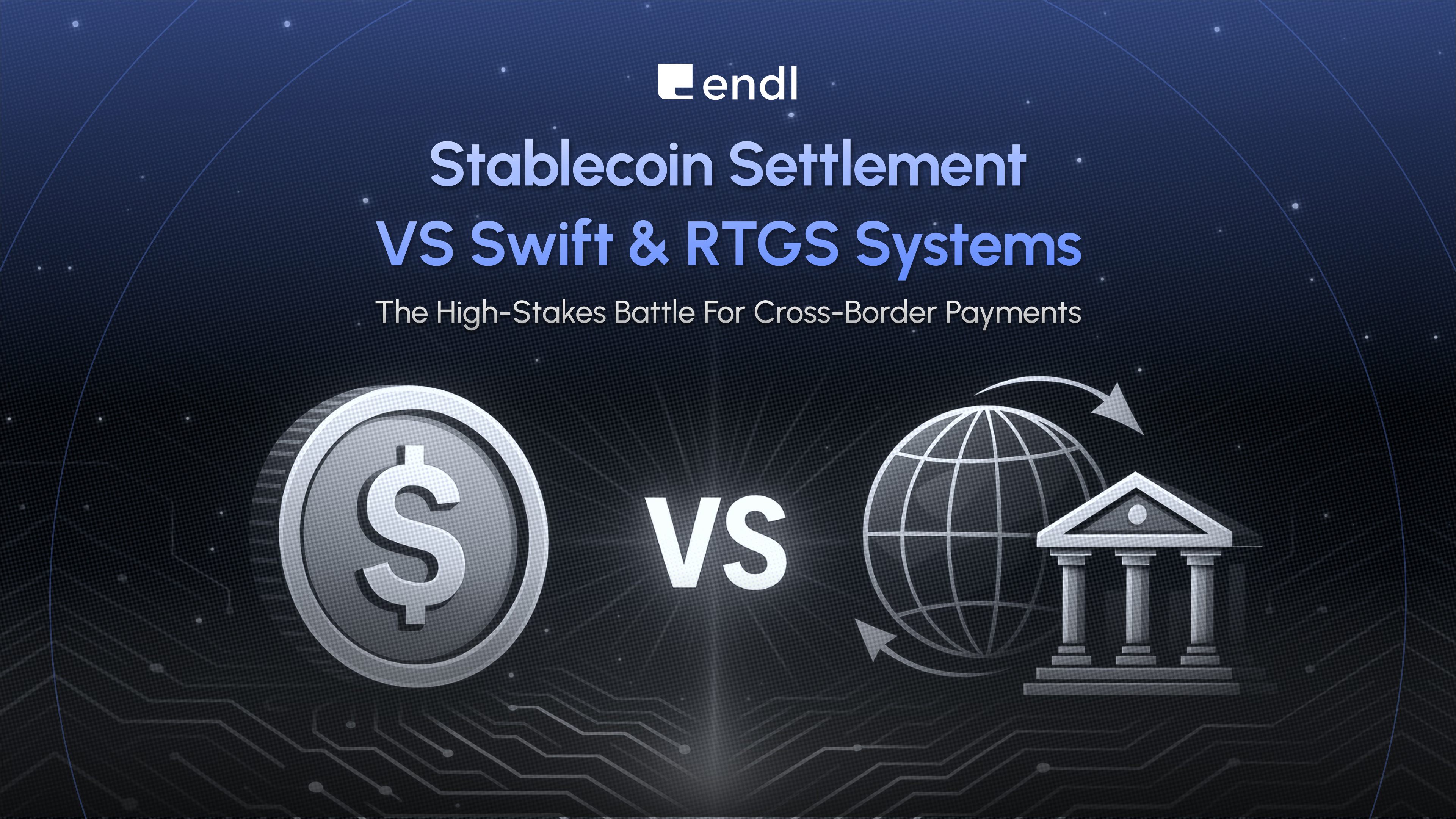Why the Global Payments System is on the Verge of Disruption
Cross-border payments are the lifeblood of global commerce, with $156 trillion flowing annually. Yet, the backbone of this system—SWIFT and RTGS networks—is outdated, costly, and slow.
For decades, financial institutions had no alternative to these legacy systems. But today, stablecoins are emerging as a game-changer, offering instant, cost-effective, and transparent settlements.
The question is: Will they replace SWIFT, or will traditional systems evolve to survive?
In this deep dive, we break down:
- The inefficiencies of SWIFT & RTGS systems
- How stablecoins are revolutionizing large-scale transactions
- Cost & speed comparisons with real-world data
- How major institutions like Visa & PayPal are adopting stablecoins
- The regulatory response & the future of institutional finance
The Reality of SWIFT & RTGS: A System Built for a Different Era
Founded in 1973, SWIFT was a revolutionary messaging system at the time. But SWIFT itself doesn’t move money—it merely acts as a relay system between banks. Actual transactions rely on correspondent banks, creating delays, fees, and inefficiencies.
Major Issues with SWIFT & RTGS
- Expensive – SWIFT transactions cost $20–$50 or more per transfer, with hidden forex markups.
- Slow – Payments take 2–5 days due to multiple intermediary banks.
- Opaque – No real-time tracking; funds can get stuck in compliance checks.
- Restricted – SWIFT operates only during banking hours, limiting real-time transactions.
Why SWIFT’s Model is Outdated in a Digital Economy
- Fragmented Infrastructure – Each financial institution involved in a SWIFT transaction operates on separate systems, creating inefficiencies.
- Cross-Border Complexity – Different jurisdictions impose varying compliance rules, further delaying settlements.
- No True Instant Finality – Unlike blockchain-based transactions, SWIFT payments can still be reversed under specific circumstances.
Stablecoin Settlements: A Faster, Cheaper, and More Transparent Solution
Unlike SWIFT, stablecoins allow direct peer-to-peer transfers on blockchain networks, eliminating middlemen, reducing costs, and enabling instant settlements.
How Stablecoin Settlements Work
✔ Instant Transfers – Funds settle in seconds, not days.
✔ Minimal Fees – Typical costs are under $1, making them nearly 100× cheaper than SWIFT.
✔ 24/7 Availability – Unlike banks, stablecoins are always online.
✔ Full Transparency – Payments are trackable on-chain.
✔ No Middlemen – Eliminates correspondent banks and excessive fees.
Which Stablecoins Are Best for Global Settlements?
Not all stablecoins are created equal. Here’s how the major types compare:
| Stablecoin Type | Backing Mechanism | Pros | Cons |
|---|---|---|---|
| Fiat-Collateralized (USDC, USDT, PYUSD) | Fully backed by cash, treasuries, or equivalent assets | Most stable and widely accepted by institutions | Centralized issuers, regulatory scrutiny |
| Crypto-Collateralized (DAI) | Backed by volatile crypto assets, overcollateralized | Decentralized, transparent reserves | Capital inefficient, high collateral |
| Algorithmic (e.g., UST, failed) | Smart contracts & arbitrage | No reliance on banks | Unstable, risky (e.g., Terra collapse) |
| Hybrid (Ethena’s USDe) | Crypto collateral + financial derivatives | Scalable, innovative | Still experimental, regulatory risk |
Takeaway: Fiat-backed stablecoins dominate settlements because they offer clarity, liquidity, and capital efficiency.
The Role of Stablecoins in Emerging Markets
Stablecoins are also transforming economies where traditional banking systems are unreliable.
- Remittances Without Borders – Western Union charges up to 10%, while stablecoins cut costs below 1%.
- Financial Inclusion – In countries like Argentina, Turkey, Nigeria, USD-backed stablecoins hedge against inflation.
- Alternative Store of Value – Citizens in hyperinflation economies use stablecoins as digital savings accounts.
Case Study: Argentina
With inflation over 100% annually, more than 30% of digital payments are now settled in stablecoins (USDC and USDT).
Institutional Adoption: Who’s Betting Big on Stablecoins?
- Visa – Integrated stablecoins via its Tokenized Asset Platform (VTAP).
- PayPal – Launched PYUSD to lower costs and increase efficiency.
- HSBC & China’s CIPS – Joined to reduce reliance on SWIFT in 2024.
Key Takeaway: The biggest financial players are already adopting stablecoins—this isn’t hypothetical anymore.
How Banks & Fintechs Are Testing Stablecoins Today
- North America – $8 trillion moved via stablecoins in 2024.
- Asia-Pacific – $150 billion saved on transfer costs.
- Europe – $3 billion settled under new MiCA rules.
- Africa – With 60% of the population unbanked, stablecoins bypass SWIFT’s $20–$50 fees.
The Regulatory Response & Future of Payments
- MiCA (Europe) – Creates a legal framework for stablecoins.
- U.S. Bills – Lummis-Gillibrand bill under debate.
- Brazil – 90% of crypto transactions are stablecoin-based.
Prediction: A hybrid system will emerge—SWIFT and stablecoins coexisting.
Stablecoins vs. CBDCs: The Battle for Digital Money
| Feature | Stablecoins (USDC, USDT) | CBDCs (Digital Yuan, Euro) |
|---|---|---|
| Issuer | Private companies | Central banks |
| Accessibility | Open, borderless | Often domestic only |
| Privacy | Higher | Full government control |
| Censorship | Lower risk | Higher risk |
Takeaway: CBDCs are coming, but businesses prefer stablecoins for interoperability and global reach.
Global Stablecoin Regulations: Where Are We Headed?
| Region | Status | Key Development |
|---|---|---|
| Europe | MiCA Passed | Clear rules for stablecoins |
| United States | Ongoing Debate | Lummis-Gillibrand framework proposed |
| U.K. | Approved | HM Treasury recognizes stablecoins |
| Singapore | Licensed | MAS regulates issuers |
| Japan | Bank-only | Only banks can issue stablecoins |
| UAE | Regulated | VARA recognizes fiat-referenced assets |
Takeaway: As regulations mature, adoption will accelerate.
Conclusion: The Shift Is Happening
Stablecoins are no longer hype—they’re already reshaping finance.
Banks, fintechs, and corporations are adopting them for faster, cheaper, and transparent settlements.
The question isn’t if they’ll disrupt global finance—it’s how fast.
How Our Product is Leading the Change
We’ve built a stablecoin-powered cross-border payments solution for businesses and institutions:
- Seamless banking & fintech integrations
- Multi-currency support
- Regulatory compliance & institutional-grade security
👉 Don’t wait. Get in touch today to revolutionize your payments.
